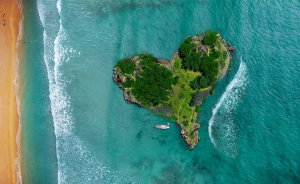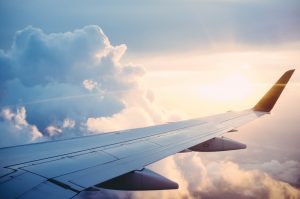The Dead Sea is a water body that has astounded human beings for time immemorial. Common logic dictates that if you put something heavy into the water, it will automatically sink away. However, in this water body, nothing can sink, and will only float. But then if you can’t drown in it, why is it called the Dead Sea? In this article, we will explore the story behind the Dead Sea and learn the science behind it!
The History of the Dead Sea:
The Dead Sea is a huge lake that is fed by the Jordan River. In older times it used to be called many different names such as the Sea of Sodom, or the Salt Sea. The names of the waterbody have been historically related to the high amount of mineral content found in the water, especially salt. The Dead Sea is also the lowest point on the surface of the Earth, laying at about 1300 feet below sea level.
Mentions of the Dead Sea date back to the centuries, first recorded by the Greeks who called it the Lake Asphaltites, because of its rich asphalt deposits. A popular piece of literature for the Qumran community, the Dead Sea Scrolls were also a piece of text that was created and stored in sealed caves dotted around the coast of the Dead Sea. These scrolls revealed rich history about the practices and traditions of the first generations of Jews. Many ancient battles such as the Battle of Masada in 66-70 AD have decorated the ancient and archaic history of the Dead Sea. In this way, not only is the lake an unusual phenomenon of science and nature but also a record scroll of the actions of man. Due to this rich history, nowadays, the Dead Sea has become a very attractive tourism site with many guided Dead Sea Tours available to enjoy.
The Science behind the Dead Sea:
First, the Dead Sea is not actually a sea but rather a lake. It is called a sea because of its huge size as well as the fact that, unlike normal freshwater lakes, the Dead Sea is hypersaline.
The science behind the Dead Sea is very simple. Because of the massive salt content in the Dead Sea which is about 30% of the water wherein normally, it is only 5% or so, the salt and other minerals sink to the bottom of the sea and increase its density. Because of this, a lot of buoyancy is created in the water. As the human body is less dense than the water, we end up floating in it instead of sinking down. The deeper the water gets, the more you get the feeling that you are being pushed up by the buoyant force of the water. Because of this floatiness, swimming in the Dead Sea is also difficult because your limbs cannot move you enough against the water lifting you up continuously.
On the fact that it is called the Dead Sea, it got this name again, because of the hypersaline water. The Dead Sea has the peculiar characteristic of not having any aquatic life. The extremely high salt levels make it an unsustainable environment for any kind of fish to live in. Hence due to the lack of aquatic life, the name Dead got added to it.
Interesting Facts about the Dead Sea:
- The mineral nature of the saltwater gives is immensely powerful medicinal properties. The water has an exfoliating effect on the skin. Many people have claimed their bone and muscle problems were also fixed.
- The Dead Sea approximately contains 37 billion metric tons of salt.
- A unique feature of the Dead Sea is that the surface of the lake often spits up small rocks and pebbles of asphalt to the surface.
- Regardless of the name, modern scientific research suggests the existence of microbial life found in the lake. It is plausible that only highly adapted bacteria can survive in the conditions.
As much as the Dead Sea is a beautiful location, we must note that the lake is still falling victim to its water disappearing due to environmental pollution and global warming. Hopefully, the splendor of this site is protected and the global community works hard to maintain the Dead Sea’s water level.

















